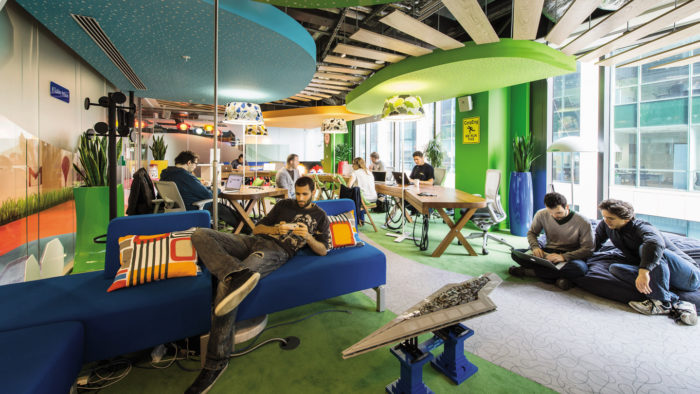When moving to an open office, interaction between teams can go up significantly—in one case by over 56%. In other words, it appears that the total amount of interaction remains relatively constant, but shifts from an internal focus to an external one.
Background context:
- The guy writing this article is CEO of a startup that analyzes workplace communication between teams.
- The general principle of this article is “Are open offices effective?”
- That stat above pops more than anything in said article.
“Open offices shall save us!”
No, they won’t. Open offices are — along with muffins and bumper billiards — one of the best examples of “Let’s deify what Silicon Valley does, because they seem to make a lot of money and have their people work pretty late.”
Open offices won’t save you. What saves you is understanding the context of your culture and how your specific people want to work and be productive. But most people miss that, or have their head jammed so far up a spreadsheet’s posterior that they can’t even have the conversation.
Still, interaction between teams does need to improve
Yep.
Sales needs marketing and vice versa.
Everyone needs IT.
Most people need Events or Operations.
The C-Suite shouldn’t be clustered together analyzing financial metrics.
Collaboration can often feel forced, yes.
But we still need to do it.
And that’s a way open offices can help.
You need to make decisions based on how your people like to work
This goes for lots of areas, including:
- Tech adoption
- The prevalence of all-hands meetings in your culture
- How much power/influence the sales team gets
- Office layout
Every office is just a collection of individuals theoretically (not always) working towards the same goal. But those individuals have tons of differences, including:
- Past connections to work
- Age
- Experience
- Family status
- Personality
- Preference for quiet
- Introversion/extroversion
- Etc.
That’s why it’s always been amazing to me how companies obsess over new product features, but barely care at all about new people features. “New people features” are new employees, or new ways of employees relating to work. After a divorce/marriage/child/death of parent/boss leaving, you don’t think about work the same way anymore. You just don’t. But we ignore that and try to force process on everything, hoping it’ll work. It doesn’t always.
You need to make decisions based on your current people and how they like to be productive. Maybe someone wants to come in at 5am because that’s when he feels he does the best. LET HIM. No one ever wrote down “All productivity must occur in this style of office between 9am and 6pm.” People are different. Jobs are different. Organizations are different. There’s no catch-all. You gotta determine what works for you.
Open offices might. They might not. But you’ve got some data on how they might help Sally from Marketing actually have a conversation with Rachel from Product.
